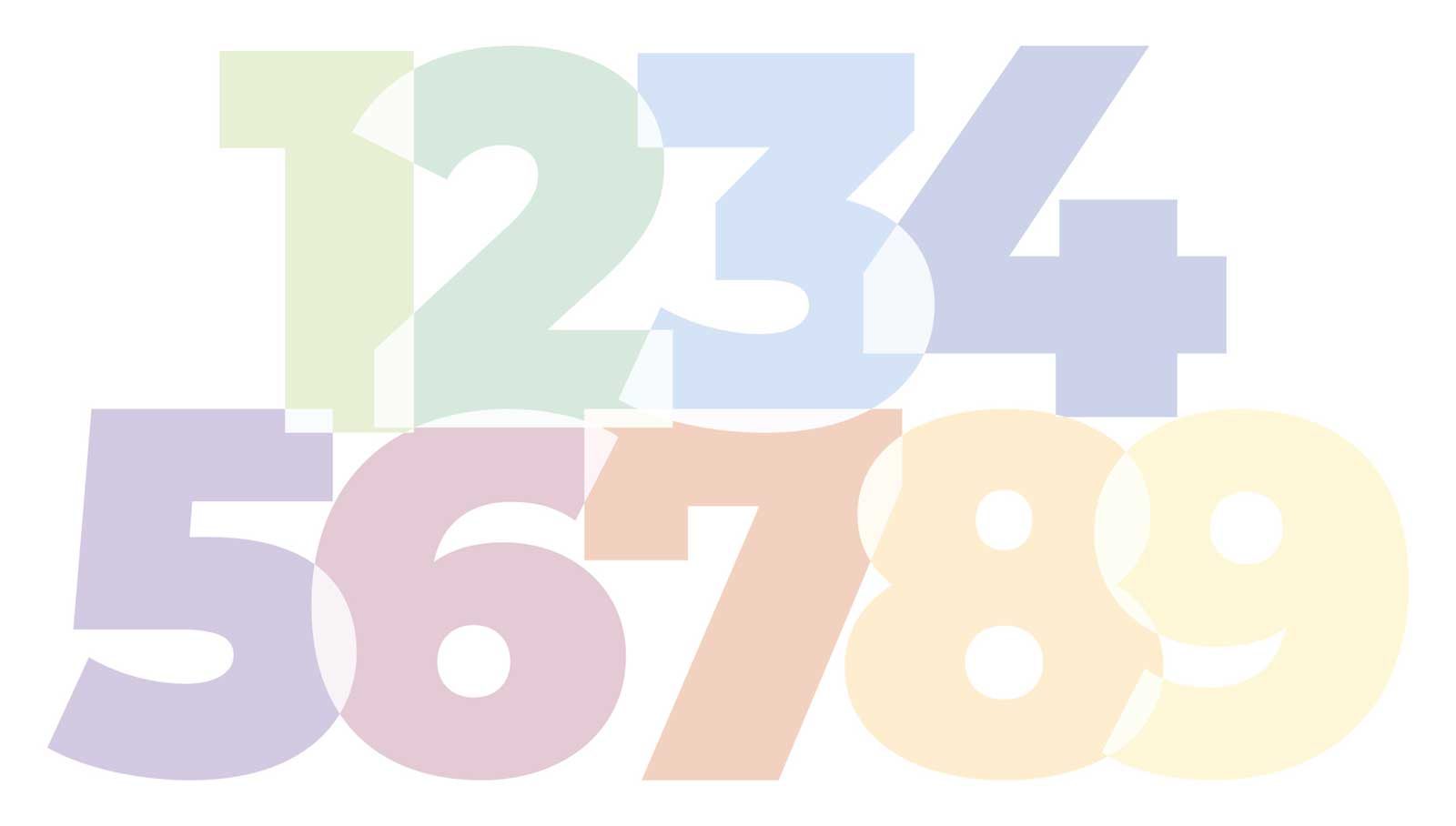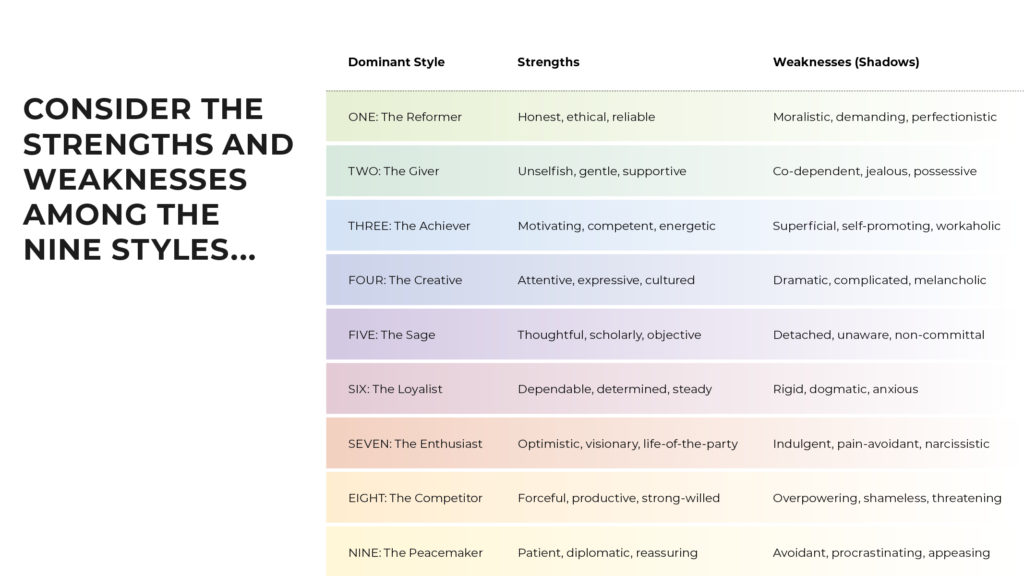Discovering Your Strengths Through the Enneagram

The best way to discover your strengths, the Enneagram suggests, is by discovering your underlying motivations and then noticing what comes naturally.
There are many good personality tests out there to help you discover your strengths. From the popular Myers-Briggs and StrengthsFinder tests to the lighthearted ones — based on colors, kittens, or Harry Potter characters — questions and visual cues offer us insight into what comes more naturally to us than others. But I want to suggest a more comprehensive way to discover your strengths and limit your weaknesses.
In my first piece for COMO, I introduced the Enneagram and its nine styles. With the wisdom of the Enneagram, we can all develop more effective leadership through an increased self-awareness. In fact, through the Enneagram, growing into a more aware leader can happen in three steps: discovering your strengths, recognizing your weaknesses, and becoming more (than) productive.
Discovering Your Strengths
The Enneagram’s focus is deeper than our strengths. It clarifies what gets us out of bed in the morning, what makes us feel alive, and what keeps us going under stress. The best way to discover your strengths, the Enneagram suggests, is by discovering your underlying motivations and then noticing what comes most naturally.
For example, the One, also known as the Reformer, is often motivated by a sense of right and wrong. They can be a perfectionist. Getting things done isn’t all that matters; it’s about getting them done the right way.
The Three, on the other hand, the Achiever, is motivated by a sense of accomplishment, so they might prefer to get the same task done as efficiently as possible, then move on to the next one.
The One’s strengths flow from their motivations. They’re honest, patient, ethical, reliable, purposeful, and persevering. They’ll lead from ideas, morals, and convictions.
The Three’s strengths also flow from motivations. They’re dynamic, energetic, self-assured, organized, intuitive, and motivating. They will lead by connecting others and keeping things moving forward.
Like each of the nine styles, the One and the Three have strengths rooted in their sources of motivations. It follows, then, that if our source of motivation leads us to our strengths, it will also lead us to our weaknesses.
Recognizing Your Weaknesses
We often talk about our strengths and weaknesses as if they’re two sets of items at opposite ends of a spectrum. But that’s not exactly true, and the Enneagram makes sense of that. Our greatest strengths are also our greatest weaknesses. Or, more appropriately, our weaknesses are the dark side — the shadow — of our strengths.
The One, mentioned above, is motivated by making things better by doing the right thing, but their perfectionism may lead them to be rigid, moralistic, uptight, demanding, and angry.
The Three, motivated by accomplishing things by working with others, may become vain, scheming, self-promoting. The Three is prone to think the rules don’t apply to them and the end justifies the means in the pursuit of success.
The Enneagram helps uncover our deep sources of motivation, which enables us to lean more into our strengths while also being honest with our weaknesses and proclivities — tendencies to misuse or weaponize our strengths.
It can be difficult to consider the weaknesses and proclivities that follow our strengths. But no one has become healthier or easier to work with by ignoring, minimizing, or rejecting their weaknesses.
I’ve found that our weaknesses are often more helpful than our strengths in revealing our deepest desires and motivations. If I become angry and impatient with someone, I stop and ask, “What am I trying to defend right now?” If I recognize a desire for attention or acclaim, I can ask, “Why do I feel insignificant?”
In the workplace, discovering your strengths and recognizing your weaknesses enables you to become more productive — in fact, we can become more than productive.

Becoming More (Than) Productive
In a culture where busyness is praised and hustle is hashtagged, productivity has become a trending topic. We all want to be productive, and rightly so. But the conventional wisdom says if you want to get more done, you need better time management. Analyze your hours. Cut out non-essential tasks and meetings. Identify and quit energy drainers. Focus on what only you can do and do it as much as possible.
Becoming more productive is good. Becoming more than productive is great.
Adam Grant, Wharton professor and author of “Originals,” has suggested that defining productivity only in terms of time management is off target. Grant writes, “After two decades of studying productivity, I’ve become convinced that time management is not a solution — it’s actually part of the problem.” So, what is his solution?
“A better option is attention management: Prioritize the people and the projects that matter and it won’t matter how long anything takes,” Grant says. “Attention management is the art of focusing on getting things done for the right reasons in the right places at the right moments.”
Most of our struggles to get things done, Grant suggests, isn’t a result of inefficiency, but a lack of motivation. When we are highly motivated, operating in our area of strengths with a clear sense of how our work will help others, we typically become most productive.
This is what it means to be more than productive: When you know who you are, when you’re doing work that matters, work you can do well, you will remain focused, get the right things done, and your efforts will be multiplied.
The Enneagram points us to motivations. Are you motivated by the allure of success or the process of working with others? Are you happier reflecting on the past or planning for the future? Would you rather face a problem head on or take a more patient, non-confrontational approach?
When you know your motivations, strengths, and weaknesses, you can get the right things done in the right way for the right reasons at the right time.
Jeremy Linneman is teaching pastor of Trinity Community Church in Columbia, Missouri. He is the author of a few short books and has been an instructor in the Enneagram since 2014 (before it was cool). He and his wife, Jessie, have three sons and spend most of their free time outdoors.


